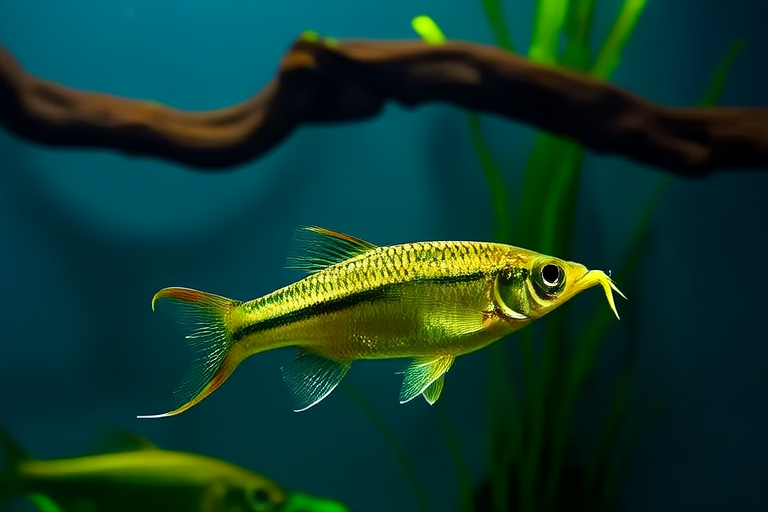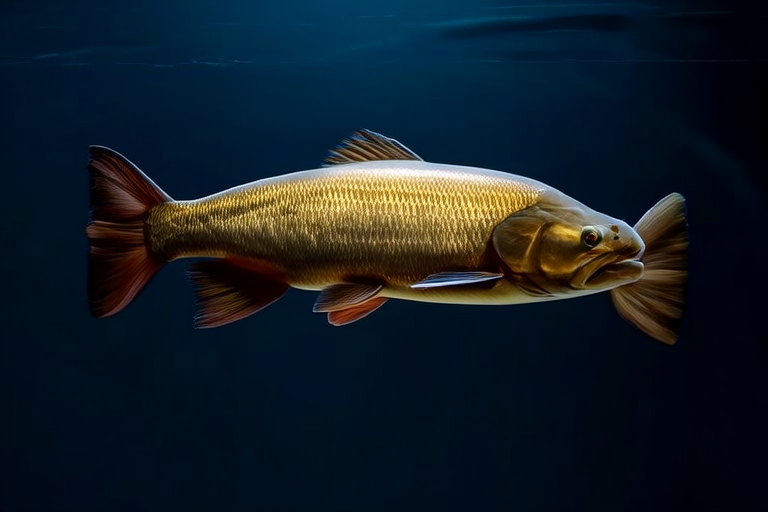
The Majestic Arowana: Unveiling the Secrets Behind Its Unique Behavior
The arowana, often referred to as the dragonfish due to its majestic appearance and historical significance, is a truly remarkable species that captivates both scientists and hobbyists alike. Known for its elongated body, scaly armor, and impressive jumping abilities, the arowana has been revered across cultures for centuries. This article delves into the fascinating world of the arowana, exploring its natural habitat, adaptations, behaviors, and the importance of understanding these aspects for its conservation.
A Brief Introduction to the Arowana
The arowana, scientifically known as Osteoglossidae, belongs to a family of bony-tongued fish that have existed since prehistoric times. These fish are characterized by their distinctive appearance, which includes large scales and a long, streamlined body. The name ‘arowana’ comes from the Malay word ‘asem-asem’, meaning ‘sweet-sour’, referring to the fish’s taste. Historically, the arowana was considered a symbol of good luck and prosperity in Southeast Asian cultures, particularly in Malaysia and Indonesia. It was often featured in art and folklore, embodying the spirit of strength and elegance.
Natural Habitat and Adaptations
Native to the tropical regions of Asia, South America, and Africa, arowanas thrive in diverse aquatic environments, from slow-moving rivers and swamps to fast-flowing streams and flooded forests. Their natural habitats are typically warm and well-oxygenated, providing ideal conditions for their active lifestyle. Arowanas have adapted to their environment through several key features. They possess gills and a swim bladder that can function as a lung, allowing them to breathe air when water oxygen levels are low. This adaptation is particularly useful during the dry season when water bodies shrink and become stagnant.
Another remarkable adaptation is their jumping ability. Arowanas can leap out of the water to catch insects, birds, and even small mammals. This behavior is not only a hunting strategy but also a means of escaping predators. Their powerful tail fins enable them to launch themselves from the water, reaching heights of up to two meters. This unique ability has earned them the nickname ‘dragonfish,’ further adding to their mythical allure.
Unique Behaviors of the Arowana
Jumping Ability
The arowana’s jumping ability is one of its most striking features. This behavior is primarily used for hunting, as they can leap from the water to catch prey above the surface. Scientists believe that this adaptation evolved as a response to the scarcity of food in their natural habitats. By jumping, arowanas can access a wider range of prey, increasing their chances of survival. Observations have shown that they can jump higher than the height of an average human, making them one of the most agile fish in the animal kingdom.
Parental Care
Unlike many other fish species, arowanas exhibit strong parental care. After spawning, the male arowana guards the eggs in his mouth until they hatch. Once the fry emerge, he continues to protect them for several weeks, ensuring their safety from predators. This level of parental involvement is rare in the animal kingdom and underscores the importance of family bonds within the species. The fry remain close to their father, forming a school that helps them stay safe and learn essential survival skills.
Social Interactions
Arowanas are generally solitary creatures, but they can be highly social within their schools or when interacting with potential mates. During mating season, males compete for the attention of females through displays of agility and strength. These displays involve rapid swimming and leaping, showcasing the fish’s physical prowess. Once a pair has formed, they work together to ensure the survival of their offspring, further emphasizing the complex social dynamics within the species.
Diet, Growth, and Myths
Diet
Arowanas are carnivorous, feeding primarily on insects, crustaceans, and smaller fish. Their diet can vary depending on their location and availability of prey. In captivity, arowanas are often fed a diet of live or frozen foods, including brine shrimp, bloodworms, and small feeder fish. Proper nutrition is crucial for their health and growth, and maintaining a balanced diet is essential for their longevity.
Growth
Arowanas are known for their rapid growth rate, especially in their early years. Under optimal conditions, they can grow up to 30 centimeters in their first year. As they mature, their growth slows down, but they continue to add length and weight throughout their lifespan. The average lifespan of an arowana is around 15 years, though some individuals have been known to live for over 20 years. Understanding the growth patterns of arowanas is vital for their care and management in both wild and captive environments.
Myths
Throughout history, numerous myths and legends have surrounded the arowana. One popular myth is that the arowana can bring good fortune and prosperity to its owners. This belief has led to the arowana being a sought-after aquarium fish, especially in Southeast Asia. Another myth suggests that the arowana has the power to heal wounds and illnesses. While these beliefs may not be grounded in science, they highlight the cultural significance of the arowana and its enduring appeal.
Conservation Efforts and Future Prospects
The arowana faces several threats, including habitat destruction, pollution, and overfishing. Conservation efforts are underway to protect this species and ensure its survival for future generations. These efforts include establishing protected areas, regulating fishing practices, and promoting sustainable aquaculture. Understanding the behavior of arowanas is crucial for their conservation, as it provides valuable insights into their needs and vulnerabilities. By studying their natural habitats, feeding habits, and social interactions, researchers can develop effective strategies to safeguard this magnificent species.
In conclusion, the arowana is a truly remarkable creature with a rich history and unique behaviors. From its impressive jumping ability to its strong parental care, the arowana continues to fascinate and inspire. As we deepen our understanding of this species, it becomes increasingly clear that their survival depends on our commitment to conservation and protection. By working together, we can ensure that future generations will have the opportunity to marvel at the majesty of the arowana.






